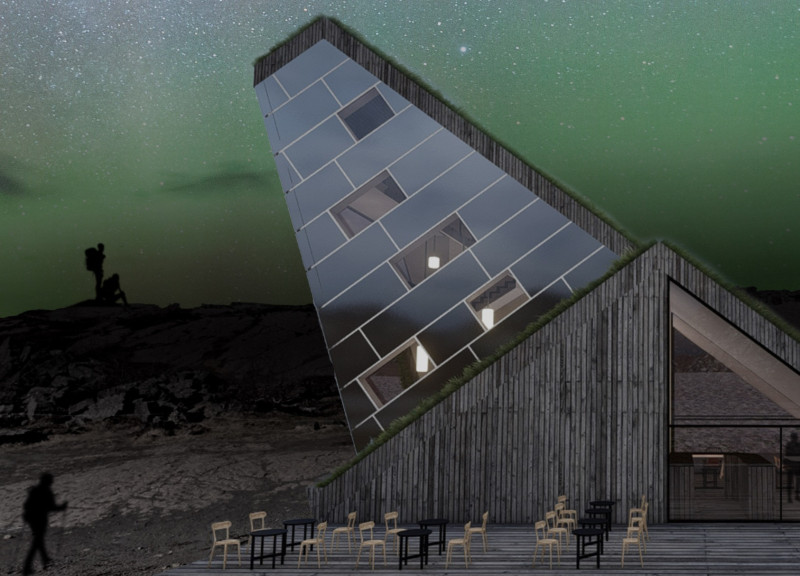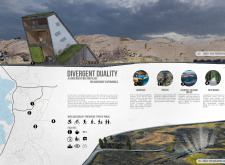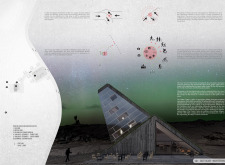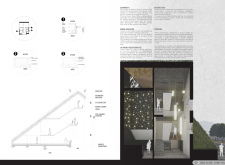5 key facts about this project
The visitor centre near Lake Mývatn in Northern Iceland focuses on the geothermal hot spring caves known as Grjótagjá. It aims to accommodate the growing number of tourists while protecting the fragile environment of the area. The design emphasizes a close relationship between the built structure and the surrounding nature, positioning the centre to encourage visitors to engage with the extraordinary geological features nearby.
Functionality and Flexibility
The visitor centre serves as a multifunctional space, providing areas for recreation, exhibitions, and social activities. It includes two flexible exhibition spaces designed for local and international artists, integrating cultural elements into the project. This versatility allows the centre to host various events, from educational programs to community gatherings, enriching the overall experience for visitors.
Accessibility and Movement
Accessibility plays a key role in the design, featuring ramps and wide pathways that ensure easy movement for all guests, including those with disabilities. The project minimizes its impact on the environment by making use of existing pathways and infrastructure, which helps preserve the surrounding landscape. A new wooden path module links the three geological sites—Grjótagjá, Vogagjá, and Hverfjall Volcano—promoting exploration and connection among the different areas.
Sustainable Approaches
The design incorporates sustainable practices, adhering to the principles of energy efficiency associated with the Passive House standard. Local geothermal energy is used for heating, connecting the building to its ecological surroundings. The choice of birchwood and iron for construction reflects local traditions while ensuring structural integrity and visual harmony with the landscape.
The visitor centre encourages exploration and engagement with the historical significance of the geothermal landscape. It features large windows that bring in natural light and provide views of the stunning scenery, allowing visitors to appreciate the unique environment both inside and outside the building.






















































